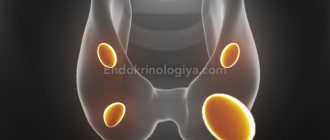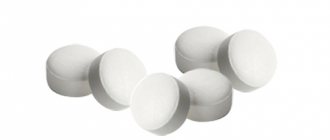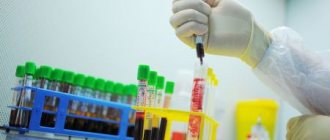In medicine, many domestic concepts are encrypted in Latin. HDL in a biochemical blood test refers to the high-density cholesterol fraction. It is considered “good” because it is not deposited in the vascular walls. “Bad” cholesterol molecules have low density and are designated LDL. Substances of high density have a milder effect on the vascular networks of capillaries, veins and arteries.
What is it and how does it differ from low densities?
High-density lipoproteins can prevent the atherosclerotic process by clearing the vascular walls of fatty deposits. They adhere to their surface “bad” lipid particles and transport them into liver cells.
HDL (HDL) is a high-density lipoprotein (High Density Lipoprotein), referred to as HDL in the Russian-language medical literature. Its primary role is to integrate into digestive enzymes, mediators and other biologically active substances. The molecular weight of HDL particles is the lowest, and the diameter rarely exceeds 10-11 nm. But LDL (LDL) in a biochemical blood test is the same LDL. If the first indicator is reduced, and the second, on the contrary, is increased, we are talking about the development of an atherosclerotic process, leading to occlusion of arteries, veins and capillaries. This is how atherosclerotic disease appears, leading to the patient’s disability and the occurrence of acute cerebrovascular accidents, coronary syndromes and pulmonary embolism.
When should you get tested?
The most reassuring data is that more than 20% of the world's population suffer from high blood cholesterol. In fact, such statistics are shocking, because atherosclerosis occurs annually in people of different ages, regardless of gender.
Timely identification of violations allows for the process of recovery and stabilization of the patient’s well-being. It is quite simple to stop the development of the disease at an early stage of its development; often, to stabilize well-being, it is enough to adjust the diet and normalize the lifestyle.
In order to find out in time about the development of pathology, patients are recommended to periodically take special tests:
- healthy people should be examined at least once every 5 years;
- the examination should be carried out in children over 2 years of age who have a genetic predisposition to developing the disease;
- people at risk of developing atherosclerosis should undergo tests and visit a phlebologist annually.
Diagnostics should also be used during treatment. A biochemical blood test will assess the progress of recovery.
Based on the information described, we can conclude that cholesterol is a useful component, the values of which must be kept in check. Uncontrolled progression of the disease can cause the patient to develop serious health problems, in particular with the cardiovascular system.
Source: medkrovi.ru
Indications for implementation
It is worth checking the level of this indicator in the blood if a person has dizziness.
Biochemistry for HDL cholesterol is performed if the patient has the following clinical symptoms:
- Chronic headaches. They appear due to constant hypoxia of brain cells. It is not the neurons themselves that are irritated, but the nerve endings of the vascular lining.
- Dizziness (vertigo syndrome), spots flashing before the eyes and ringing in the ears. Such clinical symptoms are associated with a decrease in blood supply to neurons and impaired microcirculation in them.
- Persistent coldness of the distal parts of the body, their cyanosis. Blueness and decreased temperature in the fingers and toes are caused by insufficient flow of oxygenated blood through the vessels as a result of blockages in the latter.
- Violation of the mnestic nation. This means that it becomes more difficult for the patient to remember new events, or remember long ago ones. It is much more difficult for him to think, talk and perform usual actions.
- Dyspnea. It is caused by developing pulmonary insufficiency.
How to reduce non-HDL-C cholesterol?
You may be interested in: Excess weight: when is it dangerous for health?
You get all the cholesterol your body needs from your liver. Certain foods, such as meat, poultry, dairy and oils, trigger your liver to produce more cholesterol.
To lower your total cholesterol levels, limit your intake of saturated fat. This means you should limit your intake of fatty meats and dairy products. It is also important to avoid trans fats, which are often found in:
- Bakery products;
- Light snacks such as crackers or popcorn;
- Fried fast foods such as fried chicken and French fries;
- Margarine;
- Non-dairy coffee creamer.
Try to include more whole foods in your diet, such as fresh fruits, vegetables, nuts, seeds, whole grains, fish, skinless chicken and lean red meat.
Carrying out analysis
The results of the blood test are assessed by the doctor visited by the patient.
A biochemical blood test for elevated cholesterol levels is carried out under sterile laboratory conditions. This is necessary in order to increase its validity and reduce the risk of blood poisoning. The result is deciphered using laboratory instruments, but the final decoding must be made by the attending doctor, taking into account all the nuances of the patient’s illness.
High and low cholesterol: causes
LDL cholesterol is a harmful substance, the increased content of which leads to the development of pathological conditions.
- Heredity;
- Biliary cirrhosis;
- Poor nutrition;
- Diabetes;
- Hypothyroidism;
- Liver diseases;
- Tumors of the prostate, pancreas of a malignant nature;
- Glomerulonephritis;
- Alcoholism;
- Hypercalcemia;
- Porphyria;
- Pregnancy;
- Heart attack, vascular and heart diseases;
- Removal of ovaries;
- And so on.
If there is not enough good substance, this is due to:
- Liver diseases;
- Hyperthyroidism;
- Anemia;
- Poor nutrition, malnutrition;
- Sepsis;
- Cirrhosis;
- Tumor diseases;
- Pulmonary obstruction;
- Arthritis.
That is, almost any acute or chronic disease can affect the content of fatty alcohol in the blood.
Types of cholesterol
There are 3 main subtypes of cholesterol molecules. Each cholesterol fraction is designated by capital letters:
- HDL-cholesterol. This is called high-density cholesterol (HDL). Its molecule is highly differentiated and serves the needs of the digestive tract without being deposited in the intima of the vascular lining.
- VLDL (very-low-density lipoprotein) is very low-density lipoprotein (VLDL). They are "bad" molecules.
- LDL-cholesterol is the fraction of cholesterol that plays the most important role in the atherosclerotic process.
Features of the indicator
Every cell of the human body helps it function correctly and ensures healthy life. Knowledge about the functioning of the body and the synthesis of many substances allows us to identify pathology at an early stage. Elevated LDL cholesterol is highly detrimental to health. Cholesterol is found in cell membranes. There is a lot of information about cholesterol in the media, you can read about it on the Internet, as well as many programs on the dangers of this substance.
Lipoproteins are a substance in the chemical composition of blood that is found in a protein compound. There are two types of lipoproteins - low density or LDL (ldl) and high density or HDL (hdl). Each species has its own characteristics and are responsible for a number of useful functions for humans.
Both types play a very important role in the human body and interact with each other, however, their functions are completely opposite. These substances can be detected in a biochemical blood test; a biochemical blood test will allow you to find out their concentration and compare it with standard values. Each substance has its own norm; you need to know it in order to diagnose a deviation in time. Cholesterol can be elevated for a number of reasons.
Results in biochemical analysis
While expecting a child, a woman’s hormonal background changes significantly, which provokes an increase in this indicator in the blood.
Blood counts may also differ between women and men. This is due to the fact that the fairer sex has a completely different hormonal profile. What is normal for men may be the lower limit of the pathological process for women. Therefore, it is important to take into account the correlation of the results and the physiological state of the female representative. An increased level of any lipoprotein fraction may occur during certain menstrual phases, during pregnancy and lactation. This is due to hormonal and biochemical changes in the female body.
Causes of increased LDL
Increased levels occur with: hypercholesterolemia, hyperlipoproteinemia, hypothyroidism, nephrotic syndrome, diabetes mellitus, chronic renal failure, after eating fatty foods, during pregnancy.
Increased levels occur in diabetes mellitus
When does it go down?
A decrease in level occurs with: hypolipoproteinemia, hyperthyroidism, chronic anemia, severe liver diseases, chronic lung diseases, inflammatory diseases of the joints and after acute stress.
Decoding the norms
The NICE Research Center states that a 5 mg/dL decrease in HDL increases the risk of acute coronary artery disease or brain cell ischemia by 25%.
Dependence of HDL levels on age and gender
| HDL in the blood of men | In age, years | Norm, mmol/l | Normal, mg/dl | ||
| optimal level | permissible level | unfavorable level | |||
| 0—14 | 0,78—1,68 | 55—65 | 40—54 | < 40 | |
| 15—19 | 0,78—1,68 | 55—65 | 40—54 | < 40 | |
| 20—29 | 0,78—1,81 | 60—70 | 45—59 | < 45 | |
| 30—39 | 0,78—1,81 | 60—70 | 45—59 | < 45 | |
| HDL in the blood of women | 0—14 | 0,78—1,68 | 55—65 | 45—54 | < 50 |
| 15—19 | 0,78—1,8 | 55—70 | 50—54 | < 50 | |
| 20—29 | 0,78—1,94 | 60—70 | 50—59 | < 50 | |
| 30—39 | 0,78—2,07 | 60—75 | 50—59 | < 50 | |
| For women and men | More than 40 years | 0,78—2,2 | 60—85 | 50—59 | < 50 |
Blood cholesterol levels
In a biochemical blood test, cholesterol levels are reflected in the following parameters: total cholesterol, triglycerides, LDL-cholesterol (low-density lipoproteins or LDL), HDL-cholesterol (high-density lipoproteins or HDL) and Ka.
Atherogenicity coefficient (Ka) is a calculated indicator of the risk of developing atherosclerosis.
Formula for calculating the atherogenic coefficient (Ka)
, where H is total cholesterol, HDL is cholesterol (high-density lipoprotein)
Atherogenic coefficient indicators:
- up to 3 is normal
- up to 4 - increased indicator; to reduce it, diet and increased physical activity are recommended
- above 4 - high risk of developing atherosclerosis, treatment required
Total cholesterol
Total cholesterol is the sum of cholesterol in the blood. High levels contribute to an increased risk of heart disease. Ideally, total cholesterol should be below 200 milligrams per deciliter (mg/dL) or 5.2 millimoles per liter (mmol/L).
The norm of total cholesterol is from 3.6 mmol/l to 7.8 mmol/l
| Total cholesterol level | |
| Below 5.2 mmol/l | Optimal |
| 5.2 – 6.2 mmol/l | Maximum allowed |
| Over 6.2 mmol/l | High |
LDL (“bad”) cholesterol
LDL Cholesterol – low density lipoproteins (LDL). Sometimes called "bad" cholesterol. Too much in the blood causes fatty deposits (plaque) to build up in the arteries (atherosclerosis), resulting in decreased blood flow.
LDL (LDL) cholesterol levels should not exceed 130 mg/dL (3.4 mmol/L). Levels below 100 mg/dL (2.6 mmol/L) are desirable, especially if you have diabetes, heart disease, or vascular disease.
LDL cholesterol. The norm for men is 2.02–4.79 mmol/l, for women 1.92–4.51 mmol/l.
Recommended concentrations
Recommended ranges for LDL cholesterol levels are provided by the American Heart Association, NIH, and NCEP (2003) (note that concentrations are guidelines only).
| Level dl | Level l | Interpretation |
| 190 | >4,9 | Very high LDL (LDL) levels correspond to a high risk of CAD |
High LDL levels with low HDL levels are an additional risk factor for cardiovascular disease.
Ways to normalize LDL levels
The most effective approach is to minimize fat stores located inside the abdominal cavity (visceral fat), in addition to minimizing total fat. It is recommended to avoid fried foods, cigarettes and alcohol. The diet should include foods containing polyunsaturated fatty acids (Omega-3), greens, fresh vegetables, berries, fruits, and legumes. Regular physical activity is also recommended, it is necessary to avoid stress and maintain optimal body weight.











